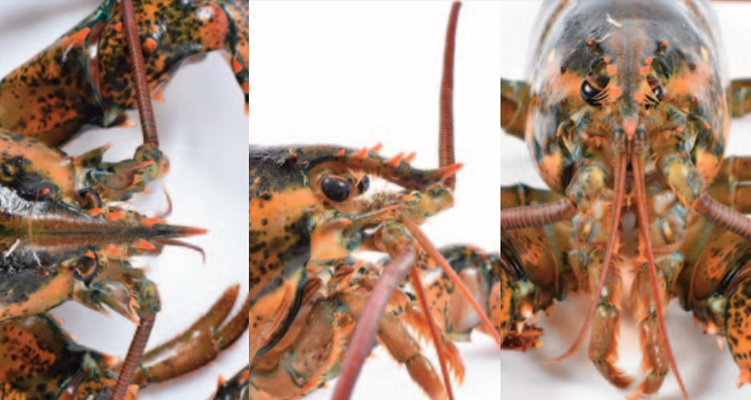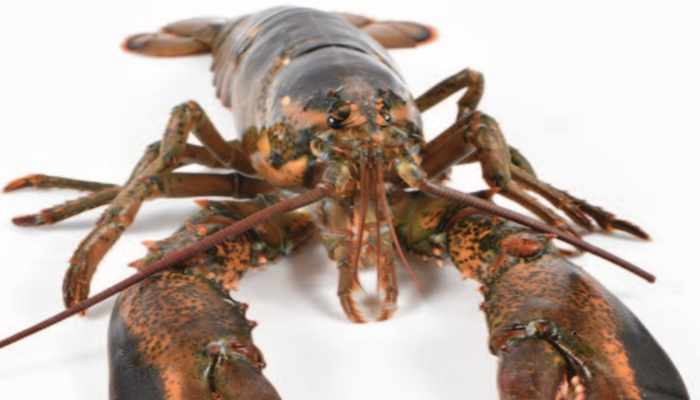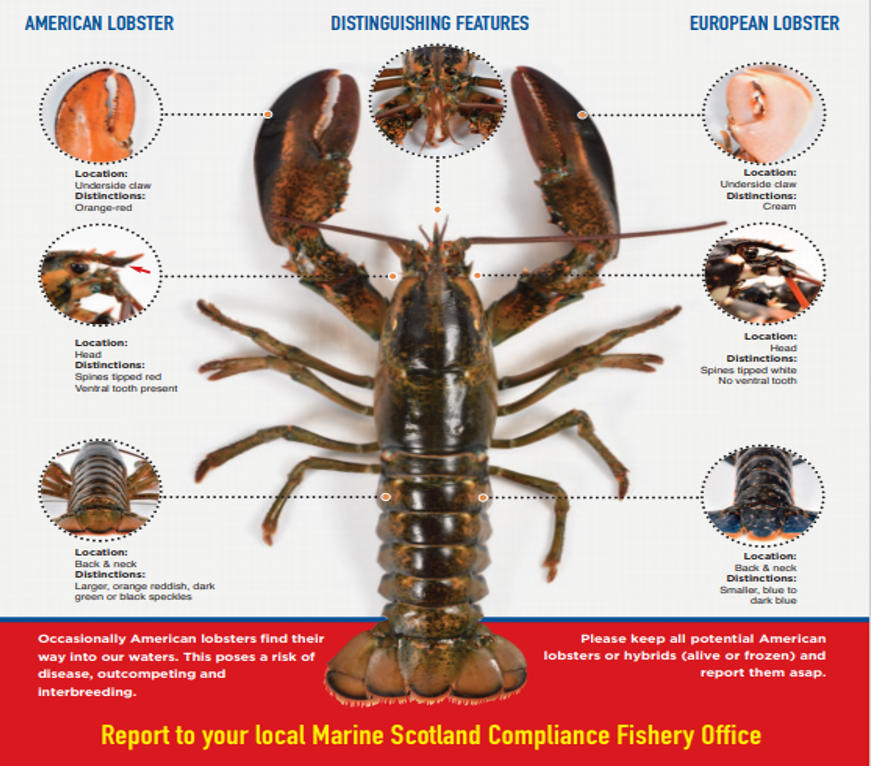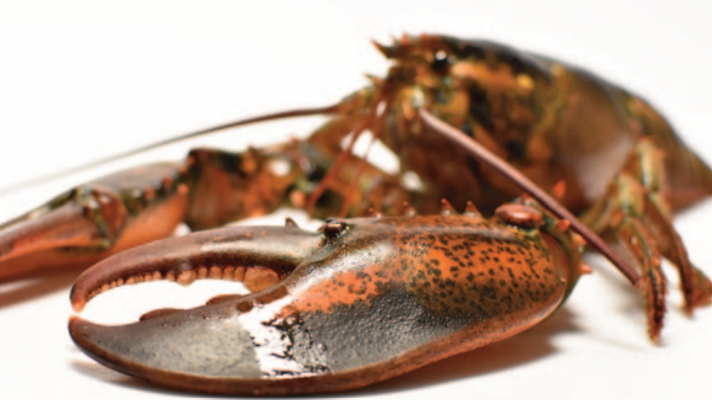Marine
Retain and report American lobster
May 24, 2021 by Marine Directorate Communications No Comments | Category Collaborations, Compliance, Fisheries, Marine Directorate general, Marine Directorate Science
A campaign has launched to help raise awareness of American lobster (Homarus americanus).
The animals are considered as an invasive non-native species as they are not indigenous to Scotland and they pose a threat to the native wildlife.
Every year Marine Scotland and other UK administrations receive a small number of reports of American lobster being caught in UK waters. These animals cannot cross the Atlantic naturally and therefore have appeared because people have released them, either deliberately or accidentally.
Marine Scotland is calling on people to report any American lobsters caught in our waters to have a true picture of where the animals are, in what quantities and if they are breeding.
Identification
American lobsters are similar to European lobsters in appearance but there are some noticeable differences:
- American lobsters are more stocky in appearance than European lobsters
- Colouration varies but American lobsters are usually green/brown with orange, red, dark green or black speckling, while European lobsters are blue in colour
- The underside of the claws of an American lobster are orange, while those of a European lobster are cream coloured
- American lobsters have one or more spines (ventral teeth) on the underside of the ‘nose’ (rostrum), a feature which is absent in European lobsters
- The spines on the rostrum of the American lobster tend to have red tips, while those on the European lobster are white tipped
Why we need your help
It is thought that American lobsters could have a negative impact on native European lobsters and other species in the marine environment, by acting as a disease vector, competing for food and shelter and potentially interbreeding. Currently we do not have enough evidence to state with certainty how much of a threat this is, so it is important that any suspected American lobsters are reported so they can be verified by Marine Scotland.
How you can help
If you think you have caught an American lobster, please contact the local Marine Scotland Compliance Fishery Officers, who will assist with collection of this data. A sample will be taken and sent for scientific analysis, and further advice provided as needed.
The information we are looking to gather is:
- Date and location of capture
- Photographs of the whole animal, the underside of the claws and the rostrum are minimum required to confirm the report
- Sex of the animal
- If claws were banded
- If it was carrying eggs
- Size (weight and/or carapace length)
Reporting
Please report any suspected American lobsters to your local Marine Scotland Compliance Fishery Office or the UK Fisheries Monitoring Centre at 0131 271 9700 or via email at UKFMC@gov.scot.
Additional information
It is legal to land and sell or consume any American lobsters you catch, however it is illegal to release them into the wild in UK waters. The knowledge and data gained from reports of any non-native lobsters is essential to aid future decision making and policies aimed at protecting the Scottish marine ecosystem.
We especially want to hear about those lobsters not easily identified as they could potentially be hybrids of American and European lobsters.
There is no link between Gaffkaemia in lobsters and foot and mouth disease in cattle. In the former disease, the causative agent is a bacteria, in the latter a virus. It should also be noted that there is an extremely low known incidence of American lobster (Homarus americanus) in Scottish waters, and therefore the risk to native lobster (Hommarus gammarus) is also currently very low.

Background
- Marine Scotland Compliance
- Contact details for all Fishery Offices
- Interactive Map of Fishery Offices and Boundaries
Tags: American lobster, environment, European lobster, fisheries, fishery office, fishery officers, Homarus americanus, Homarus gammarus, lobster, marine environment, UK Fisheries Monitoring Centre





Leave a comment